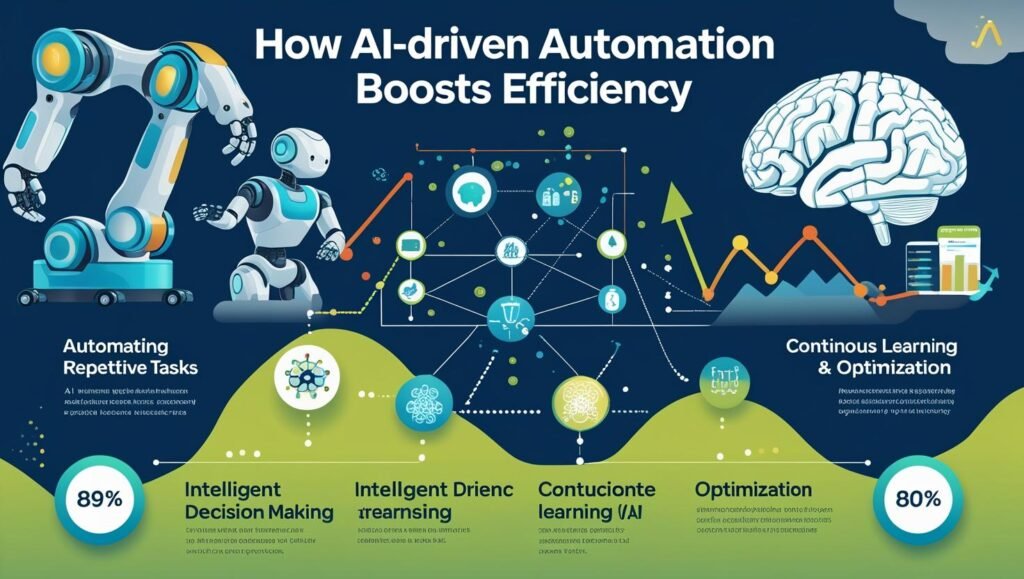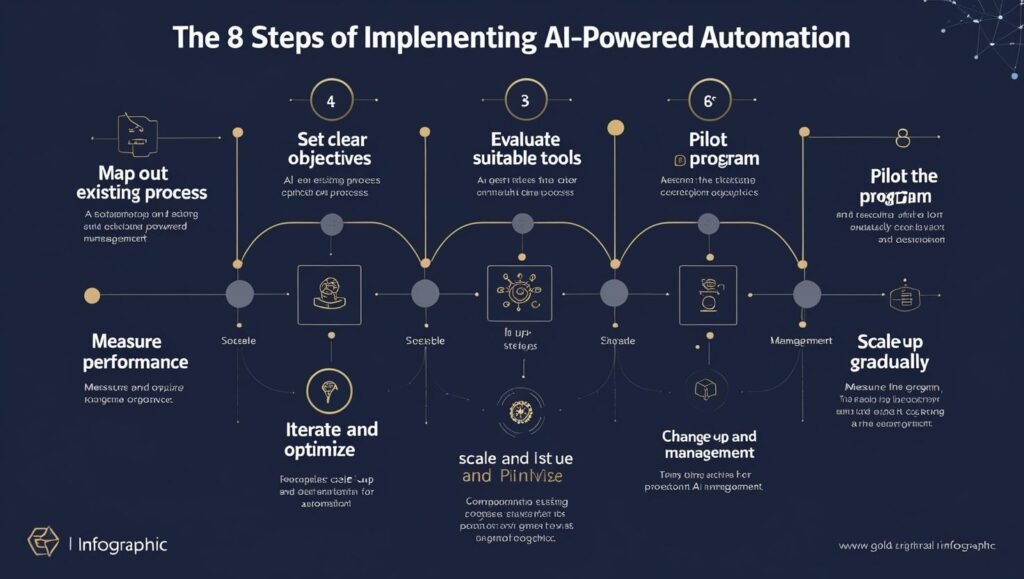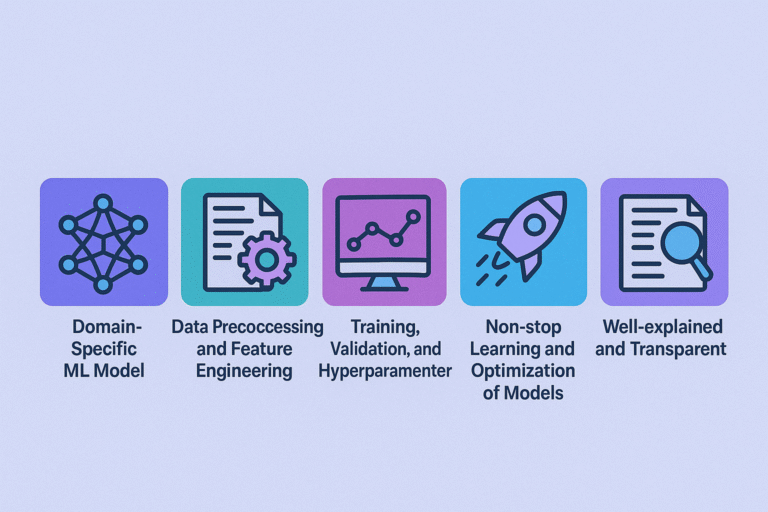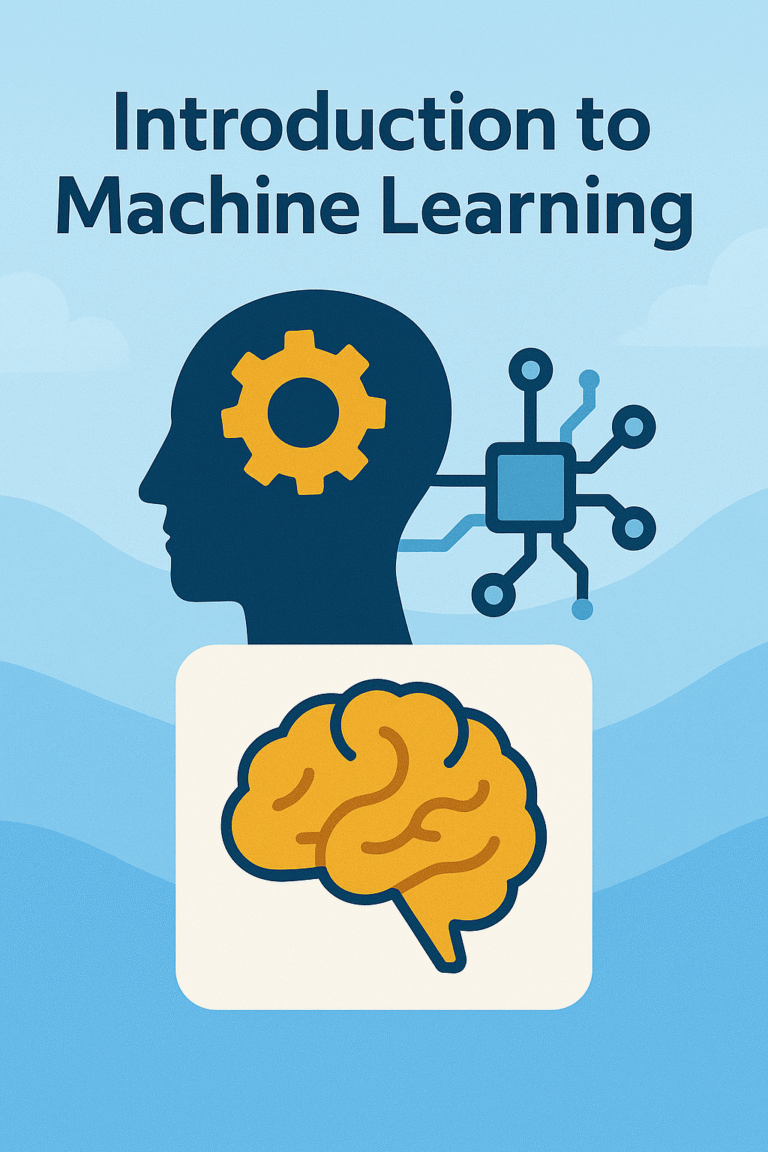In today’s rapidly evolving digital landscape, efficiency isn’t just a competitive advantage; it’s a necessity. Businesses continuously seek ways to do more with less, and one solution has been gaining remarkable attention: AI-powered automation. Recent studies suggest that companies employing AI automation can deliver efficiency improvements of around 30% or more. This isn’t merely about cutting costs; it’s about freeing up human creativity, accelerating decision-making, and transforming workflows to meet modern challenges.
Imagine a world where intelligent systems automate the drudgery of mundane, repetitive tasks, allowing teams to focus on strategic initiatives. Whether you are a businessman, developer, designer, or marketer, AI-powered automation is no longer a far-fetched dream—it is here to offer rewards.
The Numbers Behind the Promise
Numerous research studies and case studies substantiate the claim that AI automation can significantly enhance business efficiency. Here are some key stats:
- Customer Service and Contact Centers: Studies indicate that nearly 43% of contact centers have deployed AI tools like chatbots, resulting in a reduction of operational costs by roughly 30%. Companies are automating routine queries and using intelligent routing to accelerate first-response times.
- Operational Cost Reductions: According to research from McKinsey, organizations implementing AI-driven solutions report a reduction in operational costs by up to 30%, alongside significant productivity improvements.
- Developer Productivity: Tools like GitHub Copilot have been shown to speed up coding by over 55%, giving developers more time to solve complex problems while decreasing error rates. (Read more on GitHub Copilot’s impact at GitHub’s official blog.)
- Consulting and Professional Services: High-level consultants are experiencing efficiency jumps of up to 40% thanks to AI assistance in tasks from data analysis to content generation.
- Banking and Finance: Institutions such as JPMorgan Chase have integrated AI solutions to cut service costs by 30% and triple their operational throughput for advisors.
These figures are not isolated instances; they illustrate a recurring theme: AI-powered automation consistently delivers measurable improvements in quality, speed, and cost efficiency. When we aggregate the data, a 30% efficiency boost emerges as a reasonable, sustainable benchmark for companies willing to invest in AI integration.
How AI-Powered Automation Boosts Efficiency

Automating Repetitive Tasks
Many organizations find any activity involving repetition and physical effort taxing. Manually entering data, handling customer queries, managing spreadsheets; you name it and expect considerable time wastage. AI-powered bots and robotic process automation perform the automation tasks quickly and precisely.
Key Benefits:
- Error Reduction: Given the standardized nature of most processes, an error wrought by a human being is rarely reproduced by a machine system performing the same task.
- Time Savings: Automation allows your workforce to be redirected toward strategic decision-making and creative applications.
- Cost-Effectiveness: Cost savings come hand in hand with less manual work and can sometimes reach the 30% mark.
AI can assist in automating 40% of the administrative tasks implemented in various companies, allowing employees to have more time for innovation and problem-solving.
Intelligent Decision-Making
Automating simple tasks is just one step toward AI; it goes beyond this point by giving support to decisions through data analysis and predictive algorithms. AI can absorb vast amounts of data, detect trends, and provide actionable insights, all in real-time.
- Enhanced Decision Speed: Companies with AI tools say decisions on issues such as customer complaints or supply chain interruptions have a lot quicker resolution time.
- Data-Driven Insights: Through AI, this allows decision-makers the ability to perform predictive analytics and the real-time visualization of data as they consider alternative actions based on market changes.
- Great User-Engagement: Behavior analysis from AI algorithms enables marketers with the delivery of personalized content and offers, which translates into greater user engagement and retention.
A report issued by McKinsey suggests that AI may unlock value worth approximately $4.4 trillion through more intelligent decision-making and efficiency gains. A continuous influx of insights supports the 30% efficiency uplift realized in various industries.
Continuous Learning & Optimization
Manual programming never served AI well, giving it the air of an essentially static system. Machine learning algorithms improve over time, optimizing and adapting their processes as they collect additional data. The continuous learning component enables the system to enhance its efficiency and accuracy with each step.
- Self-Improvement: Generative AI models, such as GPT-4, refine their outputs based on feedback and new data, consistently increasing productivity.
- Predictive Maintenance: AI systems can foresee issues in manufacturing or IT infrastructure before they become critical, ensuring smoother, uninterrupted operations.
- Adaptive Performance: As the AI learns, workflows can automatically adjust to accommodate changes in data volume or complexity, guaranteeing sustained efficiency gains.
This evolutionary nature of AI is why companies see not just a one-time improvement, but a lasting impact on overall efficiency that far exceeds initial expectations.
AI-Powered Automation in Real-World Use Cases
Customer Support
Customer support has been transformed by AI-powered automation. Modern chatbots and virtual assistants handle a significant portion of customer inquiries, allowing human agents to focus on more complex issues.
- Chatbots in Action: Many organizations have implemented chatbots that can answer common questions, process refunds, and upsell products. Such solutions have reduced the resolution time by nearly 50%.
- Intelligent Routing: AI-based systems dynamically route customer inquiries to the right support staff, based on complexity and expertise, for expedited turnaround.
- Real-World Impact: One leading retail chain reported an uplift of 30 percent in customer satisfaction ratings after integrating AI in their support workflow.
For more information on leveraging AI in customer support, visit our detailed guide, “Optimizing Customer Service with Automation,” on the Automatio.ai blog.
Developer Workflows
Developers have also significantly benefited from AI-powered automation. Integrated development environments (IDEs) featuring AI assistants have revolutionized the way code is written, debugged, and maintained.
- Coding Accelerated: Tools like GitHub Copilot diminished the time spent on boilerplate code, so that developers could work on complex logic and architecture. One such instance measured tasks executed in a reported 55.8% less time with the given AI intervention.
- Error Reduction: AI refines code reviews and detects bugs in real time, decreasing the rate of errors commercialized in production-level software while proceeding to supply higher-level code.
- Seamless Integration: A ton of AI tools integrate right into very popular IDEs, offering a smooth developer experience bridging the gap between human creativity and machine precision.
Finance and Banking
Efficiency in finance can directly equate to huge monetary savings. Large financial institutions are adopting AI tools to enhance operational efficiency in tasks that previously required days to complete.
- Cost Reduction: Banks such as JPMorgan Chase have implemented AI platforms to reduce servicing costs by about 30%, whereas advisors can now increase their productivity threefold.
- Risk Management: AI-based systems for fraud detection, loan processing, and market predictions are in complete application; they chew through so many variables within a fraction of the time a human analyst would apply.
- Improved Customer Experiences: AI-powered systems can deliver quicker and more personalized services, enhancing customer satisfaction and loyalty.
Manufacturing and Government
AI isn’t confined to white-collar tasks; it has a profound impact on manufacturing and even government operations.
- Smart Factories: Automation through AI enables predictive maintenance and quality control. Smart factories utilizing AI report up to 27% fewer defects and see production cycles sped up by over 7%.
- Government Efficiency: Various government agencies are employing AI to streamline administrative processes, reduce paperwork, and manage resources more effectively, sometimes even amidst budget cuts and staffing reductions.
- Data-Driven Operations: In both sectors, AI systems provide real-time monitoring and analytics, which support swift decision-making and improved operational efficiency.
Implementing AI-Powered Automation: A Step-by-Step Guide

To help you harness these benefits, here’s a practical roadmap for integrating AI-powered automation into your business:
- Map Out Existing Processes: Begin by identifying repetitive and data-intensive tasks. Create a detailed workflow diagram and pinpoint areas that can benefit from automation. For example, track data entry, customer service queries, or even parts of your coding process.
- Set Clear Objectives: Define what “efficiency” means for your organization. Is it reducing manual labor, cutting operational costs, or speeding up production cycles? Establish measurable KPIs (Key Performance Indicators) to have a clear benchmark for comparing improvements.
- Evaluate Suitable Tools: Research available tools and platforms that cater to your needs. From Robotic Process Automation (RPA) solutions to specialized AI assistants, such as GitHub Copilot, or custom machine-learning platforms, select the one that best suits your operational context.
- Pilot the Program: Select a small segment of your process to implement a pilot program. For example, test an AI chatbot on your website’s customer support channel. Monitor its performance, gather data, and solicit feedback from users.
- Measure Performance: Use your predefined KPIs to evaluate the pilot program. Look for improvements in speed, error reduction, cost savings, or productivity enhancements. Tools like Google Analytics, internal dashboards, or specialized AI metrics platforms can help track these improvements.
- Iterate and Optimize: An AI system thrives on data. Optimize your algorithms using data derived from the pilot and keep fine-tuning the process. These iterations can bring with them incremental changes that culminate in a 30% efficiency gain.
- Scale Up Gradually: After demonstrating success with a pilot, gradually extend your automation solution to other areas of your organization. Ensure that you maintain some level of oversight and, wherever necessary, intercede manually.
- Change Management: Introduce your team to new processes slowly. Offer training, establish feedback loops, and ensure they view the integration of AI as an empowering tool rather than a replacement. A smooth transition is crucial for maintaining a positive outlook and productivity.
This step-by-step approach not only minimizes risk but also facilitates a smoother and more sustainable implementation journey.
Tools and Platforms: What You Should Consider
When it comes to implementing AI-powered automation, it’s crucial to choose the right tools and platforms. Here are some of the top options to consider:
- Robotic Process Automation (RPA) Tools: Choose an RPA platform integrated with AI features to automate routine tasks with minimal coding. Such platforms usually feature drag-and-drop or easy customization environments.
- AI Assistants and Generative AI: Tools such as GitHub Copilot or AI data analysis systems serve as great productivity boosters. Being able to learn from your workflow enables them to evolve from being better to being faster with your use.
- End-to-End Automation Platforms: Some solutions bundle RPA, AI, plus workflow management. Automatio.ai is one such example; it not only lets users automate interactions but also helps build web bots, scrape data, and fill forms – all without a single line of code. This presents businesses with a significant competitive advantage, especially in scenarios where time to market is crucial.
- Integration-Focused Tools: Make sure that whatever platform you choose integrates seamlessly with your existing tech stack (CRM, CMS, communication tools, and so on). Reducing friction means greater efficiency gains.
Also, remember to verify the legitimacy of the external-link authority; outbound links should only lead to high Domain Rating (DR 60+) sources.
Avoiding Common Pitfalls
While the benefits of AI-powered automation are compelling, implementation isn’t entirely free of challenges. Here are some common pitfalls to watch out for:
- Over-Reliance on Automation: Not every process benefits from full automation. Critical tasks, where human oversight is crucial, should be entrusted to competent professionals. Achieving a proper balance is essential.
- Insufficient Data Quality: AI systems rely on the data being fed into them. If the data is of poor quality, the system will generate wrong outputs or work inefficiently. Ensure that data cleansing protocols are in place to maintain data integrity and accuracy.
- Change Management Issues: There may be situations where employees feel threatened by the implementation of AI tools. Being transparent about the process and establishing training supports a smooth transition. Digitize AI as a partner that works alongside humans, rather than being set against them.
- Security Concerns: With any automation system interacting with sensitive data, cybersecurity comes first. Frequent audits, compliance checks, and strong governance frameworks form the basis of it.
Conclusion
AI-powered automation is not just a buzzword; it’s a proven strategy that delivers tangible benefits. By leveraging intelligent systems to handle repetitive tasks, support decision-making, and continuously learn from data, businesses of all sizes can achieve efficiency improvements of 30% or more.
Key Takeaways:
- Data-Driven Decision-Making:
Use AI to transform raw data into actionable insights. This not only speeds up decision processes but also minimizes errors and maximizes your ROI. - Automate the Mundane:
Streamline routine operations with RPA tools. This frees your talented team to focus on innovative and strategic work, which only reinforces your competitive edge. - Focus on Continuous Improvement:
AI solutions are not “set-and-forget”. Their iterative nature means that with constant feedback and adjustment, efficiency gains continue to grow over time. - Plan and Pilot:
Start small, measure thoroughly, and scale up gradually. A well-planned pilot project can help you refine your approach before implementing it on a full scale.
As you begin or continue your journey toward enhanced efficiency, remember that the benefits of AI-powered automation extend far beyond cost savings. They include improved accuracy, employee satisfaction, faster turnaround times, and a stronger competitive position in the market.
Ready to experience a 30% boost in efficiency firsthand? Explore Automatio.ai’s suite of tools and see how you can automate complex web interactions without writing code.



